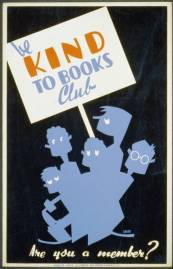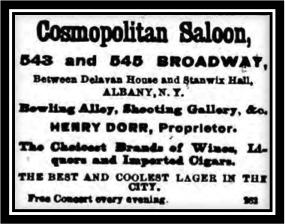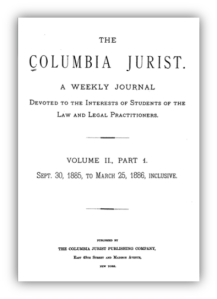A recent essay by Adam Liptak in the New York Times criticizes law journals on several fronts, including the fact that they are largely student-run. “These student editors are mostly bright and work hard, but they are young, part-time amateurs who know little about the law or about editing prose.”[1] Liptak questions why students are responsible for defining the body of legal scholarship. The essay goes on to criticize law journals as under-cited, irrelevant, obscure, and plagued by bias in the selection process.
“In-house” student editorial work
The fact that students edit and select a large proportion of the articles written by law faculty and other experts is indeed something that is not done in other fields, making it an easy target for criticism. Law journal publishing is also unique in that operations have mostly been retained in-house, compared to other disciplines where journal publishing is concentrated in a few large commercial publishers.[2] By contrast, law journal publishing is a non-commercial enterprise that is supported in part by extracurricular student editorial work. Many students find the experience educational, rewarding, and practical, with the added benefit of improved employment prospects.
Journal service benefits students

Arlington Gregg, artist (1940)
WPA Illinois Art Project
Library of Congress
WPA Poster Collection
No known publication restrictions
Students have been editing law journals since the late 1800s. There are probably many reasons this became the dominant model, but in the process students have become important beneficiaries. Some would now argue that “the law review’s primary purpose is educational”—the experience not only “teach[es] students to write, edit, and think critically” but faculty-author interaction with students throughout the editorial process is in turn an “additional teaching responsibilit[y].”[3] The skills learned by journal editors are also quite practical and are particularly useful in appellate or federal trial court practice, judicial clerkships, specialized practice areas, or any work involving extensive legal analysis and writing, including academic professions.
Then-editor-in-chief of the Cardozo Journal of Conflict Resolution remarked last year in another cycle of law journal criticism that not only do students “grow[] tremendously” by editing the work of faculty and other authors, they benefit from the experiences of both producing their own scholarly works and “of managing a large team, controlling a significant budget, and interacting with leading scholars from around the world.”[4]
More recently, the senior notes editor of Michigan State Law Review responded to Liptak by highlighting the educational quality of journal participation and the resulting improved employment prospects. A student editor’s work is
a significant learning experience. Members of the journal spend two years of their law school careers working tirelessly to produce well-written and well-researched articles. Legal recruiters even seek out law review editors, in part because of the amount of time dedicated to the journal. A New York City attorney was quoted in U.S. News saying that large law firms are looking for the “smart workhorses,” student editors who are used to devoting 20 hours per week (or more) to their law review tasks on top of the demanding work of a law student.[5]
Also in response to Liptak, editor-in-chief of the NYU Law Moot Court Board journal focused on networking and the practical experience gained in serving on a journal:
We network with alumnae and peers, judges and practitioners. We produce a final product. We foster mentorships with advisors and professors. We work on tight, often high-pressure deadlines. We explore fascinating issues of law. We vastly improve our research, writing and editing skills. In short, it prepares us to be lawyers.[6]
Editors-in-chief of the N.Y.U. Review of Law & Social Change countered some of Liptak’s charges with a description of the journal’s practitioner-oriented focus and highlighted student opportunities for collaborative article writing with practitioners.[7]
Undergraduate research journal motif
Universities around the world are increasingly publishing undergraduate journals that provide students with opportunities to conduct research and write within their disciplines, collaborate with faculty on research and scholarship, and edit a scholarly journal.[8] The growth of this phenomenon is some indication that the experience is significant in education.
The best time for law students to learn to write and publish within their discipline is in law school. Some colleges may offer pre-law programs along with opportunities to serve on undergraduate student-edited law journals. There is, however, no set pre-law path, and students come to law school with majors from a variety of fields.[9] A juris doctor is also a terminal degree in the sense that it is generally the degree pursued to practice law in the United States.[10] That makes law school the appropriate place for students to experience journal participation before going into practice.
The problem, as perceived by Liptak and many others, is that law students are not only selecting and editing the work of their peers but also that of faculty, practitioners, judges, and other authors.
Student-edited journals and peer review
Of the 999 law journals published in the United States 66% are student-edited with no formal peer review, according to data from Washington & Lee University School of Law’s Law Journals: Submissions and Rankings for 2012.[11] While peer review was a feature of some early law journals,[12] it currently only characterizes about 16% of U.S. law journals, some of which may also be student-edited or peer-edited. The remaining 18% are peer-edited by legal professionals (but not peer-reviewed).[13]
These statistics notwithstanding, many of the 600+ student-edited journals do involve experts and faculty in the article selection process. Not reflected in the Washington & Lee listing are the 19 student-edited journals that utilize the peer-review services of PRSM (the Peer Reviewed Scholarship Marketplace)[14] and other student-edited journals that expressly use some form of peer review[15] or that more informally receive faculty input on selections. So peer review is being used to some extent, it is just not yet well-documented.
In the absence of peer review, student editors have been defended as being quite capable of selecting logically sound articles based on their substantive interests without having subject-matter expertise,[16] and there are some faculty, student editors, judges, and attorneys who maintain that peer review is not necessary.[17]
Evaluating the need for editorial change
Criticizing student-edited law journals seems like an age-old tradition, but many journals have been responding to the critiques with new policies and procedures. As calls for reform persist[18] evaluating the need for change to established editorial processes might be something for some journals to consider. If systemic reforms are proposed, I would hope that they keep in view the student-editor perspective on law journal publishing.
[1] Adam Liptak, “The Lackluster Reviews That Lawyers Love to Hate,” Sidebar, New York Times, October 21, 2013, http://www.nytimes.com/2013/10/22/us/law-scholarships-lackluster-reviews.html?_r=0.
[2] Mark Ware and Michael Mabe. The STM Report: An Overview of Scientific and Scholarly Journal Publishing, 3rd ed. (The Hague: International Association of Scientific, Technical and Medical Publishers, 2012): 33, http://www.stm-assoc.org/2012_12_11_STM_Report_2012.pdf.
[3] Cameron Stracher, “Reading, Writing, and Citing: In Praise of Law Reviews,” New York Law School Law Review 52, no. 3 (2007/08): 360.
[4] Brian Farkas, “Fixing Law Review Critics,” Inside Higher Ed, November 30, 2012, http://www.insidehighered.com/views/2012/11/30/student-run-law-reviews-have-much-contribute-legal-education-essay.
[5] Katie Wendt, “Shaping Legal Scholarship: A Student Perspective,” Michigan State Law Review Blog, October 27, 2013, http://www.msulawreview.org/shaping-legal-scholarship-a-student-perspective/.
[6] Amanda Levendowski, “Why Law Journals Matter,” Oh Snapski (blog), October 21, 2013, http://ohsnapski.com/2013/10/21/why-law-journals-matter/.
[7] Nicholas Melvoin and Andrew Neidhardt, “How Law Reviews Can Get It Right,” RLSC Blog, October 23, 2013, socialchangenyu.com/2013/10/23/how-law-reviews-can-get-it-right.
[8] The Council on Undergraduate Research (CUR) lists 119 undergraduate journals internationally. The journals listed by CUR not only publish undergraduate student research but some may also publish graduate student and faculty work. The journals may be exclusively edited and reviewed by students or have faculty involvement in the editorial process, including some with peer review.
[9] Pre-Law Committee, ABA Section of Legal Education and Admissions to the Bar, “Pre-Law: Preparing for Law School,” accessed November 2, 2013, http://www.americanbar.org/groups/legal_education/resources/pre_law.html.
[10] The educational requirements for sitting for a state bar may also include foreign law degrees and other forms of education or prior bar admissions. National Conference of Bar Examiners and American Bar Association Section of Legal Education and Admissions to the Bar, Comprehensive Guide to Bar Admission Requirements 2013: 8–16.
[11] Washington & Lee School of Law, Law Library, “Law Journals: Submissions and Ranking, 2005–2012,” accessed November 3, 2013, http://lawlib.wlu.edu/LJ/index.aspx. Search U.S. and Student-edited. Note that online supplements are included in this list.
[12] Michael I. Swygert and Jon W. Bruce, “The Historical Origins, Founding, and Early Development of Student-edited Law Reviews,” Hastings Law Journal 36 (1984–1985): 783–786.
[13] In Washington & Lee’s law journal listing, search U.S. and Refereed and then U.S. and Peer-edited to obtain these statistics. Unfortunately, the listing does not identify which Refereed journals are also student-edited.
[14] Peer Reviewed Scholarship Marketplace, “Current Members,” accessed November 5, 2013, http://www.legalpeerreview.org/members/.
[15] Stanford Law Review (peer review amenable to shortened selection time frames), Harvard Law Review (faculty peer review), University of Chicago Law Review (occasional peer review), and New York University Review of Law & Social Change (expert practitioner review), among likely others.
[16] Stracher, “Reading, Writing, and Citing,” 355 and note 45 (for the proposition that students are capable of “identifying articles that make valid and logical points,” citing Natalie C. Cotton, “The Competence of Students as Editors of Law Reviews: A Response to Judge Posner,” University of Pennsylvania Law Review 154 (2006): 958).
[17] Richard A. Wise, Lucy S. McGough, James W. Bowers, Douglas P. Peters, Joseph C. Miller, Heather K. Terrell, Brett Holfeld, and Joe H. Neal, “Do Law Reviews Need Reform? A Survey of Law Professors, Student Editors, Attorneys, and Judges,” Loyola Law Review 59 (Spring 2013): 68.
[18] Wise et al., “Do Law Reviews Need Reform?”


